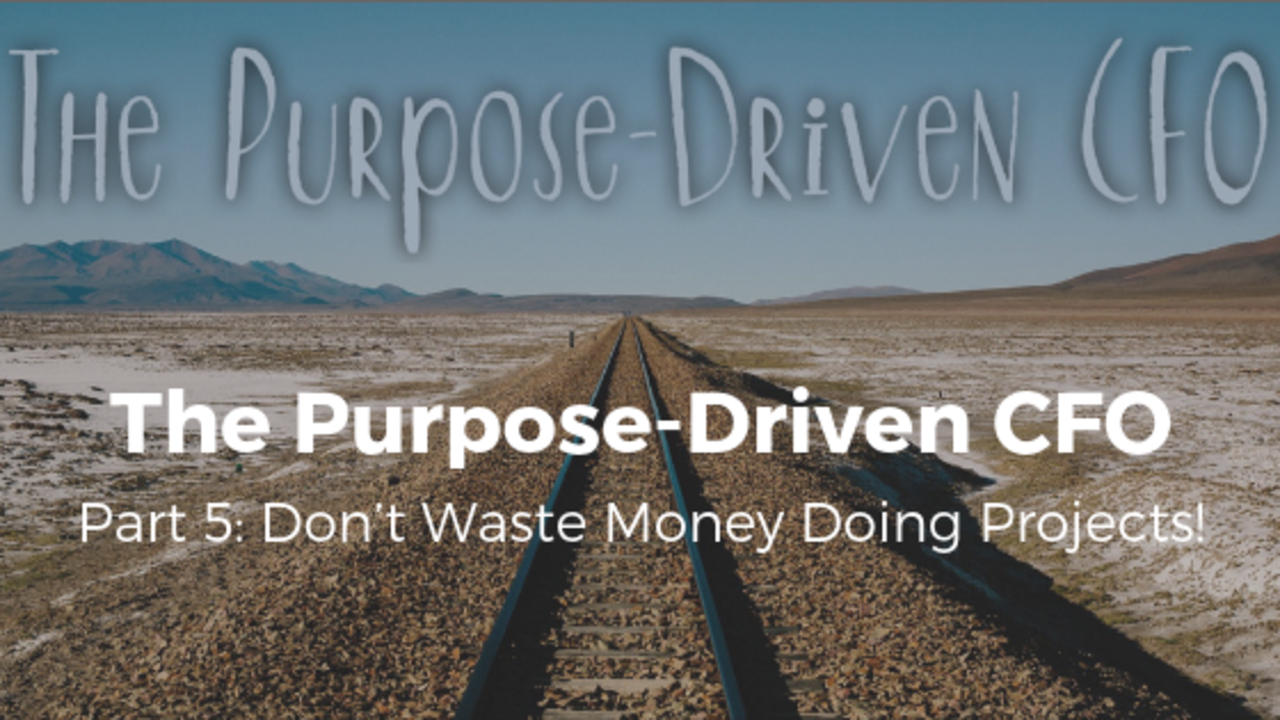Let's stop messing about with project budgeting!

By Andy Burrows
Budgeting creates problems for projects in business.
Projects are often something of an anomaly for Finance when it comes to expenditure control and resource allocation. At least that’s the way that it’s felt.
The problem, however, is really budgetary control.
When I was doing management reporting for functional expenditure areas, that’s what I used to feel with projects.
And the problem was that we were trying to manage project expenditure in the same way as every other kind of expenditure.
We’d create cost centres for projects as if they were business departments. That would mean the nomination of a cost centre manager, and the inclusion of the project costs within the ‘actual vs budget’ variance analysis each month for each function.
When it came to forecasts, we’d collate the data in the same way as every other cost centre. And we’d challenge their forecasts, and their spending against budget in the same way as every other cost centre.
And that meant project...
Don’t make this one mistake in your Finance Transformation

By Andy Burrows
Finance Transformation programmes will often include something like the following line in their business case: “Capacity created by automation and process efficiency will be reinvested in value-adding activity.”
Sounds great, doesn’t it? What could possibly be wrong with that?
Well, as an aspiration, it’s got a lot going for it. The trouble is, no one really believes it and it hardly ever happens. In fact, the opposite often happens. The capacity created is turned into cost savings, which leave even less time for “value-adding” activity than before.
So, if you really want a value-adding Finance function, don’t let your Finance Transformation programme become all about cost savings. And be clearer on how Finance adds value.
Automation is a good thing
First, lest you misunderstand me, let me say that automation and process efficiency are good things.
When I look back on the revolution caused by computerisation 20-30 years ago, I was eager to see how the new technol...
The Purpose-Driven CFO Part 5: Don’t Waste Money Doing Projects

By Andy Burrow
[First published 21st March 2017]
[This article is also on LinkedIn - why not "Follow+" Andy and give the article a "like"?]
How can a purpose-driven approach help Finance managers and CFOs to prevent their businesses from wasting money on projects?
Over the course of this series, I’ve been looking at business Finance activities from what I’ve called a “purpose-driven” perspective. I have set out to investigate whether examining, and being explicit about, the reasons why we do things, actually changes or influences the way we do them. If you haven't seen it already, take a look at the introductory article that explains the thinking behind the approach: The Purpose-Driven CFO Part 1: Introduction. That, fittingly, tells you why I’m asking the ‘why’ questions!
I’ll give you the links to the other articles in the series at the end.
What is a Project For?
A project is, “an individual or collaborative enterprise that is carefully planned to achieve a particular aim.”
...There's No Such Thing as an IT Project!

By Andy Burrows
[First published 11th March 2017]
“There’s no such thing as an IT project. All projects in business are business projects.” That was a tweet I put out a while back. And it drew a response from a young programmer.
“By the same logic, there’s no such thing as a construction project either. Erecting a new office building is pure business,” he tweeted back. And the exchange continued.
So, I thought it might be good to explain what I mean when I say that there’s no such thing as an IT project.
Why Pick on IT?
Firstly, why pick on IT?
Well, in business circles over the last 50 years it has become common to think of IT and software development when talking about projects. If you say the word ‘project’ in a business setting, people will think you are talking about IT. The reasons for that are probably related to the fact that methodologies developed for running projects, such as PRINCE2, initially applied to projects involving software development or implementation. And ...




